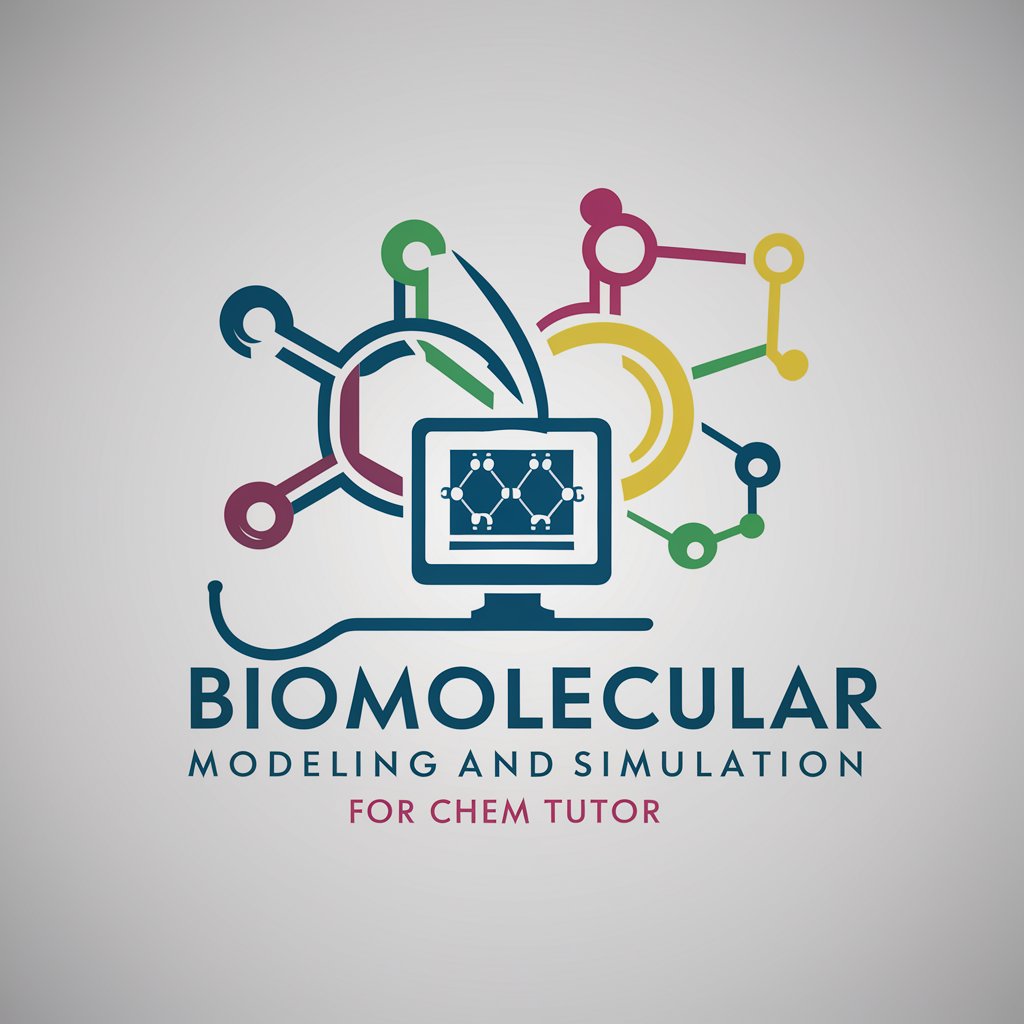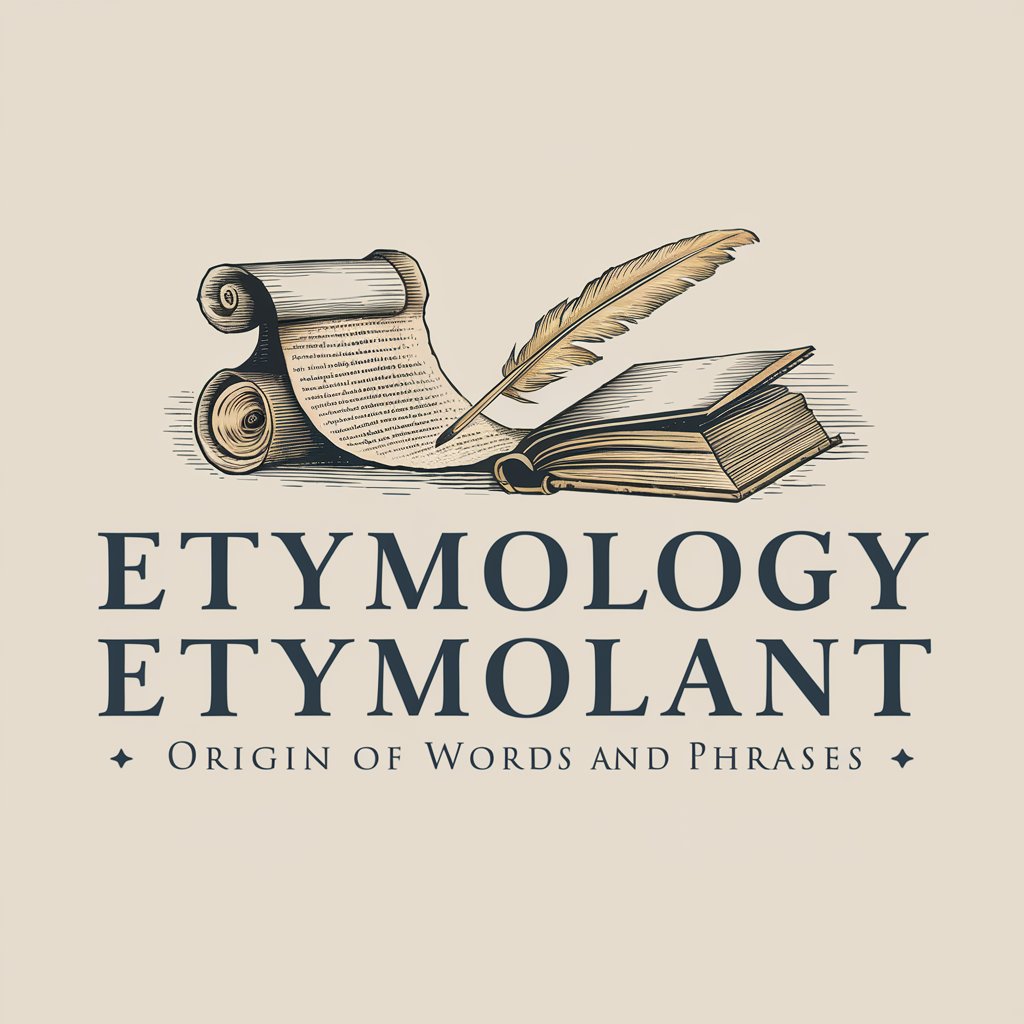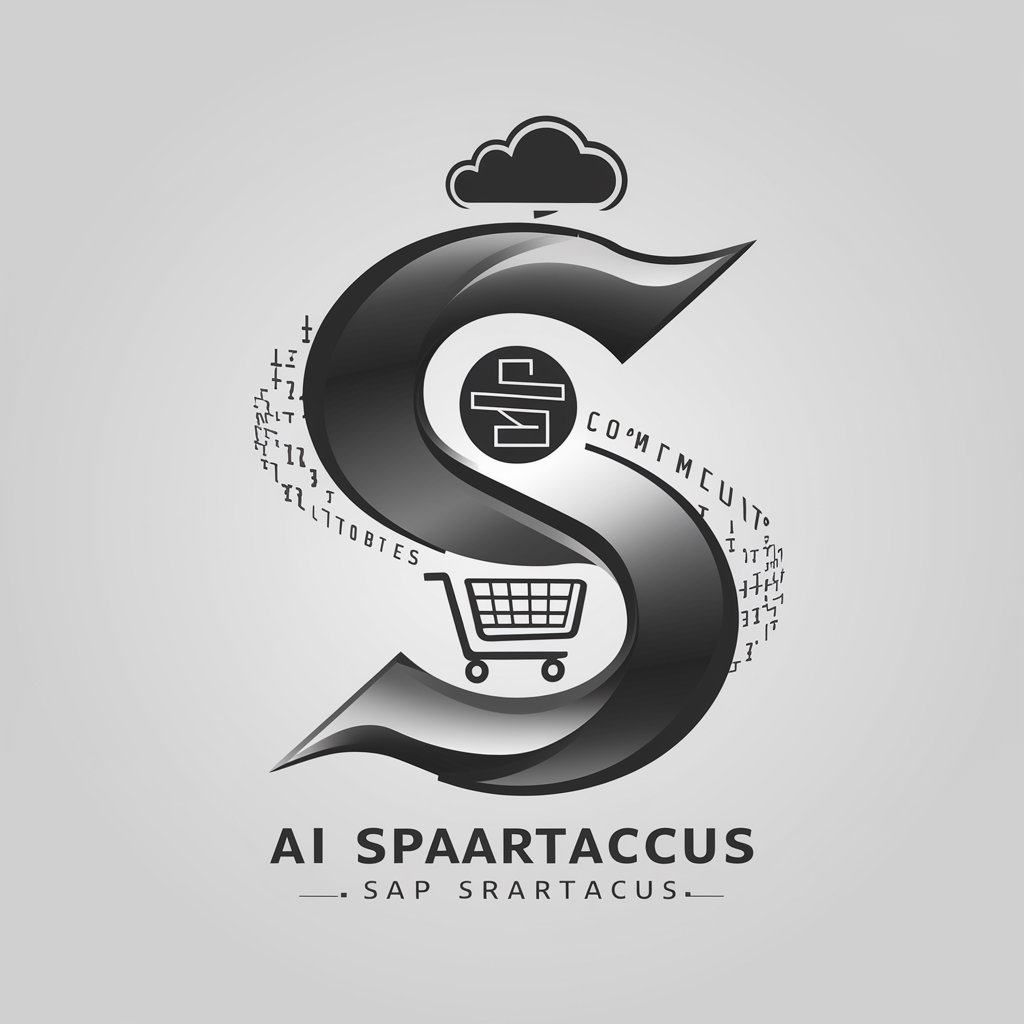Biomolecular Modeling and Simulation in Chem Tutor - Biomolecular Simulation Learning

Welcome to Biomolecular Modeling and Simulation for Chem Tutor!
Empowering Chemistry with AI Simulation
Explain the process of molecular dynamics simulation and its applications in biochemistry.
What are the key differences between quantum mechanics and classical mechanics in molecular modeling?
How does molecular docking help in drug discovery and development?
Describe the role of force fields in biomolecular simulations.
Get Embed Code
Introduction to Biomolecular Modeling and Simulation in Chem Tutor
Biomolecular Modeling and Simulation in Chem Tutor is a specialized virtual tutoring platform designed to offer in-depth educational support in the realm of biomolecular modeling and simulation, particularly tailored for chemistry students. The core objective of this platform is to bridge the gap between theoretical chemistry principles and their practical application in biomolecular sciences. Through a combination of advanced computational tools, interactive simulations, and real-world case studies, it facilitates a comprehensive understanding of complex molecular behaviors and reaction mechanisms. For instance, users can explore molecular dynamics simulations to understand protein folding processes or use quantum mechanics/molecular mechanics (QM/MM) simulations to study enzyme-catalyzed reactions, providing a hands-on experience in computational chemistry and molecular physics. Powered by ChatGPT-4o。

Main Functions of Biomolecular Modeling and Simulation in Chem Tutor
Interactive Simulation Modules
Example
Visualizing the docking of a drug molecule within the active site of a protein to predict binding affinities.
Scenario
Used by students to understand the principles of drug design and the factors influencing drug-receptor interactions.
Customizable Computational Experiments
Example
Conducting a series of molecular dynamics simulations to study the effects of different solvents on protein stability.
Scenario
Researchers can use this function to test hypotheses about protein behavior in various environments, aiding in the development of more stable biopharmaceuticals.
Educational Resources and Tutorials
Example
A series of step-by-step guides on setting up and interpreting QM/MM simulations for studying enzyme mechanisms.
Scenario
Beneficial for graduate students and early-career scientists seeking to incorporate computational methods into their research toolkit.
Ideal Users of Biomolecular Modeling and Simulation in Chem Tutor
Upper-Division Undergraduate and Graduate Chemistry Students
These users benefit from a deeper understanding of molecular systems and simulations, which are integral to advancing their academic and research pursuits in chemistry and related fields.
Early-Career Researchers in Biochemistry and Pharmacology
For those beginning their journey in research, the platform offers tools and tutorials to apply computational chemistry techniques in drug discovery, enzyme study, and material science.
Educators in Chemistry and Biochemistry
Professors and teachers can integrate this platform into their curriculum to provide students with a practical understanding of theoretical concepts, enhancing learning outcomes in science education.

How to Use Biomolecular Modeling and Simulation in Chem Tutor
Start your journey
Initiate your learning experience by visiting yeschat.ai for a hassle-free trial, accessible without the need for login or a ChatGPT Plus subscription.
Explore available resources
Familiarize yourself with the interface and available resources, including tutorials, documentation, and example simulations, to understand the tool's capabilities.
Define your learning objectives
Clearly outline what you aim to achieve, whether it's understanding a specific molecular interaction, simulating chemical reactions, or mastering a particular modeling technique.
Engage with interactive simulations
Use the tool's interactive simulations to experiment with different biomolecular models, observing outcomes and refining your understanding through trial and error.
Utilize the Q&A feature
Take advantage of the dedicated Q&A feature to ask specific questions, get clarifications, and deepen your knowledge based on personalized feedback.
Try other advanced and practical GPTs
Bible Buddy
Illuminating the Bible with AI

Marketing Maven
Elevate Your Marketing with AI

Critical Reader
Empower your reading with AI-driven insights.

JavaGPT
Elevate Your Code with AI

Historical Etymology Expert
Unlock the past, understand words deeply

Origin of Words and Phrases
Unlock the history of words and phrases with AI-powered etymology.

Wildlife Documentarian
Empowering wildlife understanding with AI

BirdingBuddy
AI-Powered Bird Discovery and Tracking

Imaginary Animals Creator
Craft realistic creatures with AI.

Wolf GPT
Explore the animal kingdom with AI-powered insights.

Botanical Buddy
Empowering your green thumb with AI.

SAP Spartacus Expert
Expertise in SAP Spartacus Development

Frequently Asked Questions about Biomolecular Modeling and Simulation in Chem Tutor
What kind of models can I simulate with this tool?
This tool supports a wide range of biomolecular models, including proteins, nucleic acids, lipids, and complex carbohydrates, allowing for the study of their structure, dynamics, and interactions within various environments.
Can I use this tool for drug discovery research?
Absolutely. The tool is equipped with features for docking studies, binding energy calculations, and molecular dynamics simulations, making it invaluable for identifying and optimizing potential drug candidates.
How does this tool help in understanding enzyme mechanisms?
By enabling the simulation of enzyme-substrate interactions and reaction pathways, it offers insights into the catalytic mechanisms, substrate specificity, and the effect of mutations on enzyme activity.
Is prior experience in computational chemistry required to use this tool effectively?
While prior experience can be beneficial, the tool is designed with a user-friendly interface and extensive educational resources, making it accessible to learners at various levels of expertise.
How does the tool incorporate the latest research findings?
The tool is regularly updated with the latest algorithms and models from cutting-edge research, ensuring that users have access to the most current methodologies and data.
